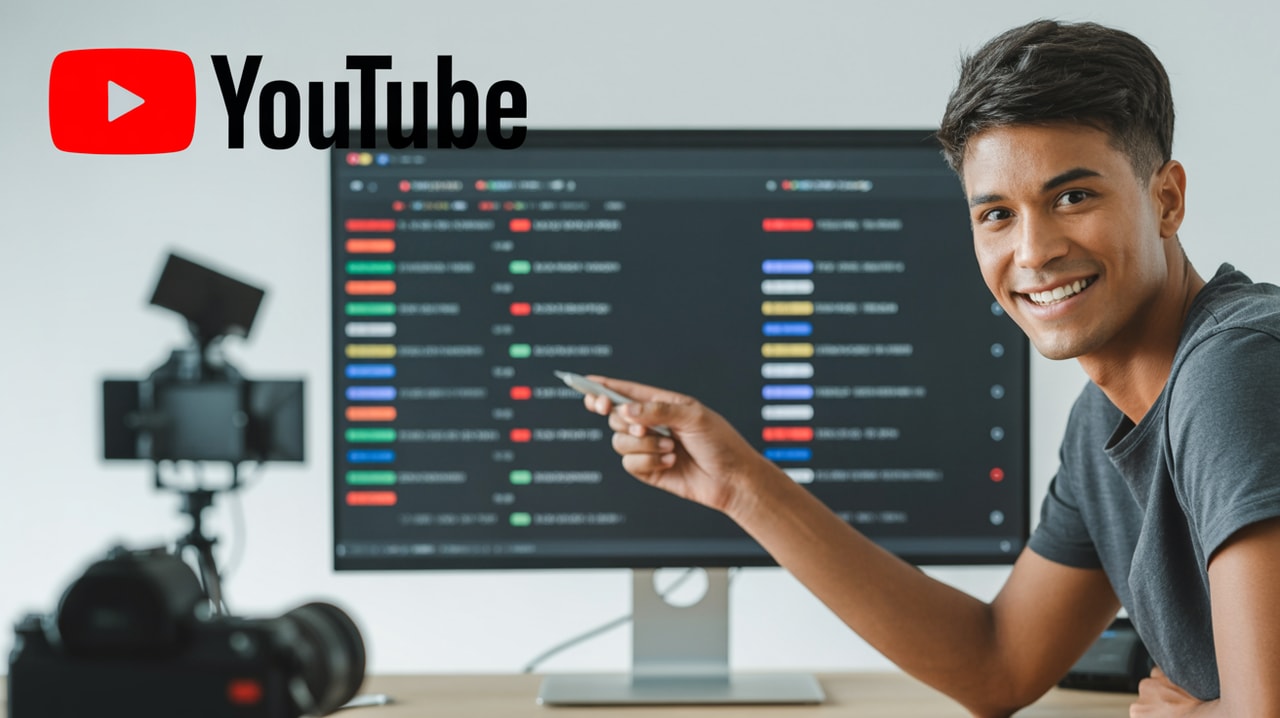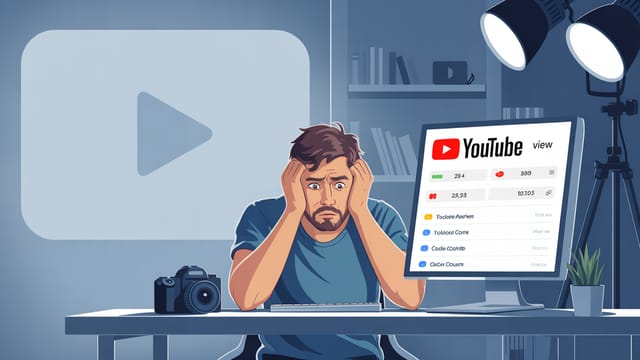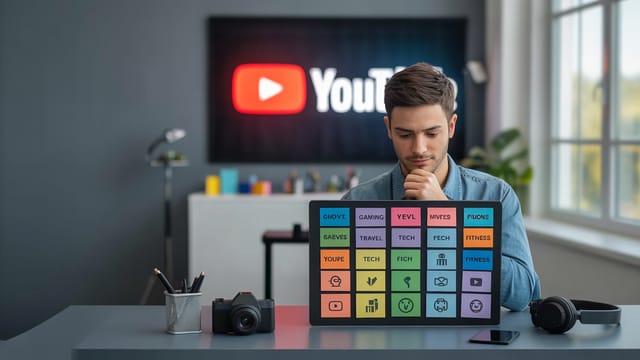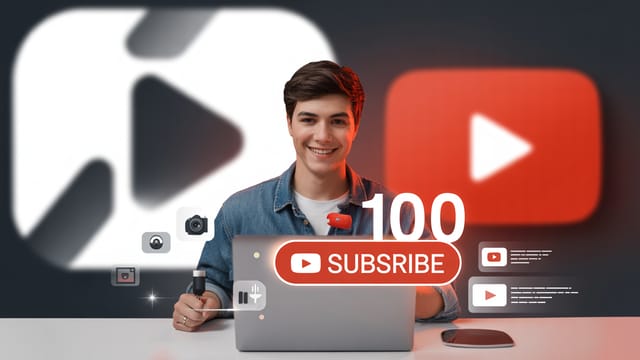
Ready to get your next 10,000 subscribers?
Join thousands of creators who use Subscribr to create faster, better YouTube videos.
Optimizing YouTube Chapters for SEO and User Experience
Getting your videos discovered on YouTube can feel like navigating a constantly changing landscape. Many creators struggle to get their content found, leading to frustration and slow growth. While factors like compelling titles, descriptions, tags, and thumbnails are essential, there's another powerful on-video optimization feature that can significantly boost both user experience and your video's discoverability: YouTube chapters.
YouTube chapters, created using timestamps in your video description, break your video into navigable sections. They not only make it easier for viewers to find specific information within your video but also offer a strategic advantage for how your content appears in search results, including Google Search's "Key Moments."
How Do YouTube Chapters Affect SEO?
You might wonder if simply adding timestamps can really impact your video's performance in search. The answer is yes, and it's primarily through Google's "Key Moments" feature.
When your video ranks in Google Search results, applying chapters allows Google to display "Key Moments" directly beneath your video title. These moments are essentially clickable links that take a user directly to a specific point in your video. This seamless integration enhances your video's visibility and can drive substantial external traffic from Google Search. The titles you give your chapters can act as additional keyword opportunities that Google and YouTube's algorithms use to understand the content within your video.
Think of chapter titles as mini-headlines for each section of your video. When you use relevant keywords naturally within these titles, it reinforces the topics covered in your video, making it more likely to appear for related searches. While YouTube's algorithm has evolved beyond simple keyword matching, these contextual clues still play a role in discoverability, especially in conjunction with the "Key Moments" feature.
Should All YouTube Videos Have Chapters?
While chapters offer significant benefits, not every single video requires them. The decision often depends on the length and structure of your content.
For longer videos, such as tutorials, documentaries, in-depth reviews, or extensive guides, chapters are invaluable. They prevent viewers from having to scrub through the entire video to find the specific information they need. This improves the viewer experience, making your content more user-friendly and increasing the likelihood that someone will watch the relevant sections, even if they don't watch the whole video.
There's a common concern that chapters might reduce watch time by allowing viewers to skip sections. However, the strategic insights from YouTube experts suggest that balancing this potential risk against the benefits of improved viewer experience and discoverability through features like Google Key Moments is crucial. Prioritizing viewer value and making your content easy to consume can build trust and strengthen your brand in the long run, often outweighing a minor impact on overall watch time.
Shorter videos, like quick tips, vlogs, or brief updates, may not benefit as much from chapters, as the viewer can easily consume the entire video without needing navigation. Ultimately, consider if chapters genuinely enhance the viewer's journey and support the content's purpose.
How Do I Name My YouTube Chapters for SEO and Clarity?
Naming your YouTube chapters effectively is a balance between providing clear navigation for viewers and including relevant terms for discoverability. Here's how to approach it:
- Start with 0:00: Your first timestamp must always be 0:00, and it should typically be titled "Introduction" or the title of your video. This signals to YouTube to enable chapters for your video.
- Be Descriptive and Clear: Each chapter title should accurately reflect the content covered in that specific section. Use language that clearly tells the viewer what they will learn or see if they click on that timestamp.
- Include relevant keywords (Naturally): While avoiding keyword stuffing, think about the terms people might use to search for the information within each chapter. Integrate these keywords naturally into your descriptive titles. For example, instead of just "Section 1," use "3:15 Setting Up Your Camera for Live Streaming."
- Maintain a Logical Flow: The chapter titles should read like a coherent outline of your video, guiding viewers through the content step-by-step.
- Keep it Concise: Chapter titles appear in various places (description, progress bar hover, Google Search). Keep them relatively short and to the point so they are easily readable.
- Ensure Accuracy: Double-check that your timestamps are correct and align precisely with the beginning of each section they represent.
You can choose to be very overt in your chapter titles, explicitly stating the topic (like "Video Resolution" or "Clean HDMI Setup"), or use a slightly more generic but still informative approach (like "Tip Number 1: Improve Your Lighting") if the specific tip isn't easily summarized in a short title. The key is to be consistent and ensure the titles provide value to the viewer.
Implementing Chapters for Better Discoverability and User Experience
Adding chapters is a straightforward process:
- Watch Your Video: Go through your uploaded video and note the exact timecode (including seconds) where each distinct section begins.
- Format Your Timestamps: In your video description, create a list using the noted timecodes. The format should be
HH:MM:SSorMM:SSfollowed by a space and the chapter title.- Example:
0:00 Introduction 1:35 How Chapters Help SEO 4:50 Best Practices for Naming Chapters 7:10 When to Use Chapters 9:05 Conclusion
- Example:
- Place at the Top: While YouTube can sometimes detect chapters elsewhere, it's best practice to place your timestamp list near the top of your video description.
- Save Changes: Save your video details, and YouTube should automatically create the chapters.
It's important to note that if you have automatic chapters enabled in YouTube Studio settings, they might override your manual entries or appear alongside them. For maximum control and SEO benefit, it's often recommended to disable automatic chapters and add them manually.
By strategically implementing chapters, you're not just improving navigation; you're giving YouTube and Google more data points to understand your video's content, potentially leading to better placement in search results and making your videos more appealing to viewers looking for specific information. This contributes to better on-video optimization, aligning with modern YouTube strategy that focuses on audience engagement and content value for discoverability.
Chapters as Part of Your Optimization Strategy
Optimizing your YouTube videos goes beyond just keywords. It's about creating a positive experience that encourages viewers to watch longer and engage with your content. Chapters play a vital role in this by making long-form content more accessible and digestible.
When viewers can easily find the information they need, they are more likely to have a positive interaction with your video and channel. This can lead to increased viewer satisfaction, which the YouTube algorithm values. While direct "SEO" in the traditional sense (keyword density) is less impactful on YouTube, factors like viewer retention and session watch time (how long someone stays on YouTube after watching your video) are crucial. By improving navigation, chapters can indirectly contribute to these metrics by making viewers happy and encouraging them to explore more of your content or stay on the platform.
Furthermore, by creating clear, segmented content that lends itself well to chapters, you are inherently structuring your videos in a way that is beneficial for both viewers and the algorithm. This attention to detail signals high content quality and a creator who is focused on providing value.
Platforms like Subscribr can assist creators in planning and structuring their video content effectively, making it easier to identify natural breaking points for chapters during the scripting phase. By using research tools and outlining features, you can build a script that is not only engaging but also perfectly set up for clear, SEO-friendly chapters.
Conclusion
Optimizing your YouTube chapters is a simple yet powerful step you can take to improve both the user experience and discoverability of your videos. By providing clear navigation and leveraging the "Key Moments" feature in Google Search, you can drive more traffic to your content and keep viewers engaged.
Make it a standard part of your post-upload checklist, especially for longer videos. By carefully choosing descriptive, keyword-relevant titles for your chapters and ensuring accurate timestamps, you're making your content more accessible, more appealing in search results, and ultimately, providing greater value to your audience. This focus on viewer value and smart on-video optimization is key to thriving on YouTube.





